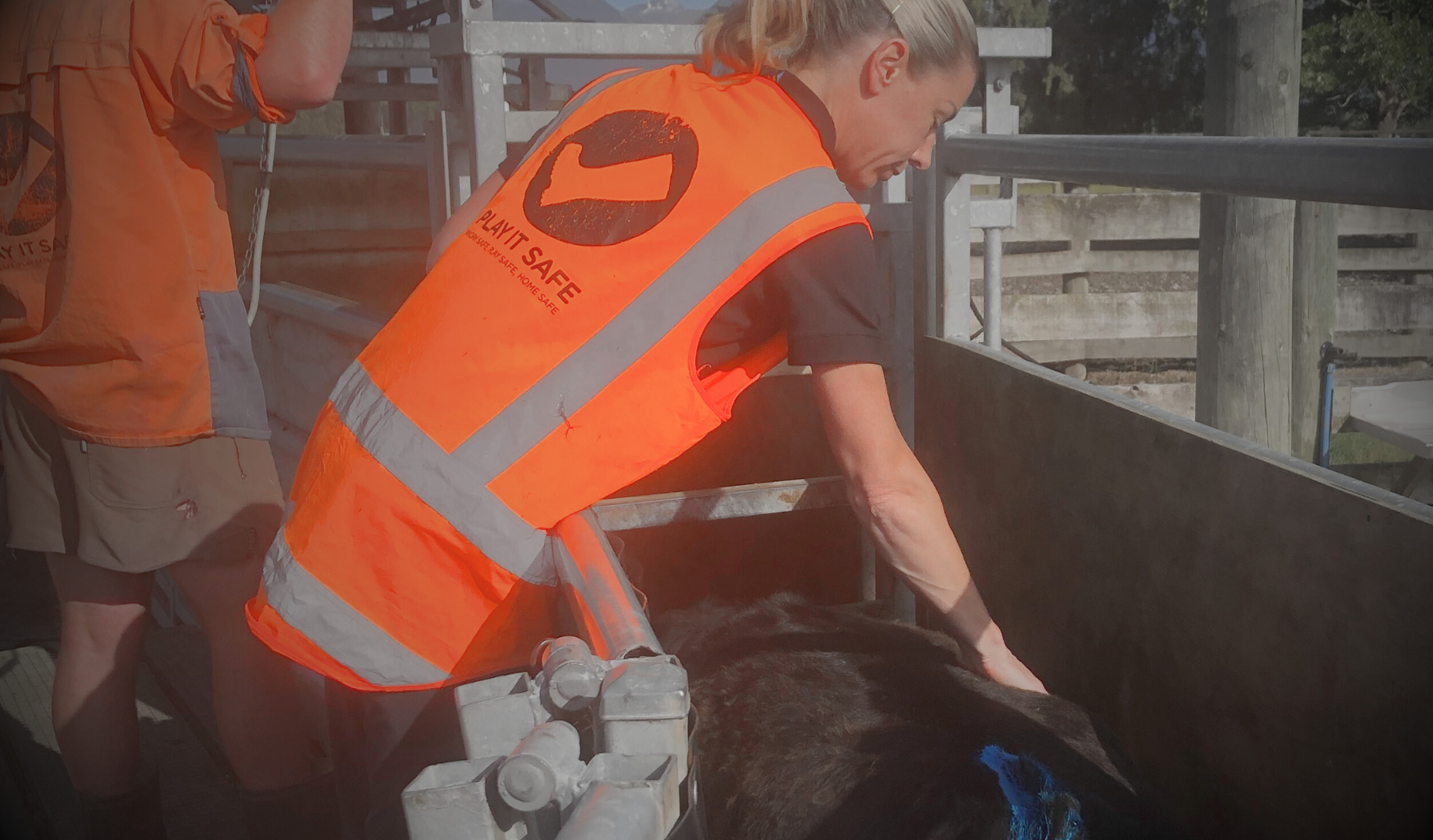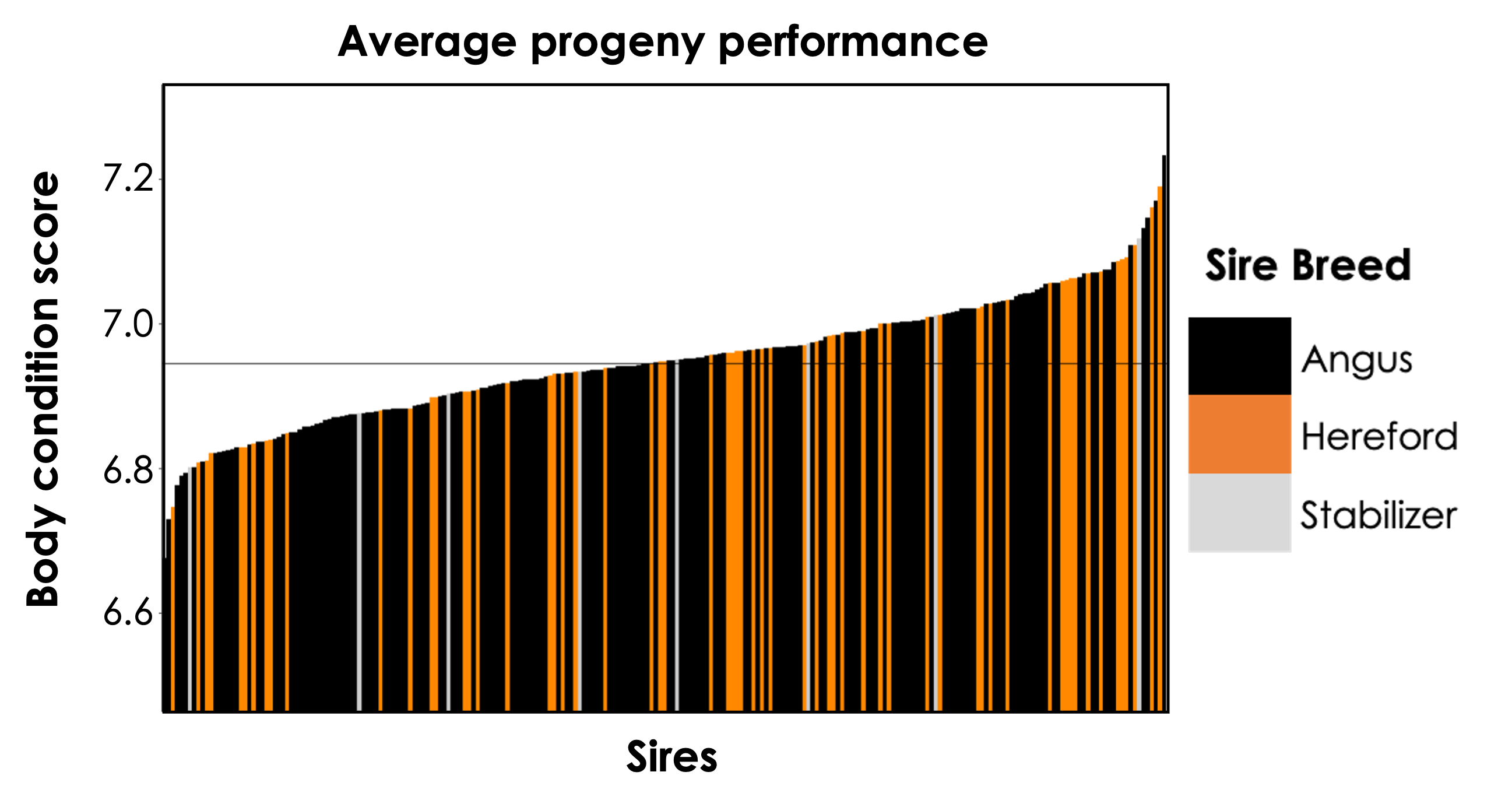The genetics of cow body condition score

Cow body condition score is one of the key factors to manage throughout the farming calendar. A breeding cow with a bit of spare energy stacked on her back is more productive, more robust, and better-looking. But where does genetics come into all this? Could your bulls be working harder to produce full-bodied bovine goddesses of fertility?
Right now, there are no body condition score (BCS) breeding values calculated for most kiwi bulls. But outcomes from the B+LNZ Genetics Beef Progeny Test have shown that there could be.
Over 240 sires have been assessed for cow BCS in the B+LNZ Genetics Beef Progeny Test and more than 4,500 cows have had their BCS measured at three time points: prior to mating, at weaning and prior to calving. There was quite a range of average cow BCS scores between sires (graph below). The heritability of cow BCS was 0.26 indicating that around 26% of variation in cow chunkiness can be attributed to genetics. So, there is plenty of opportunity to add extra love-handles to your herd via bull selection.
The researchers also looked at related traits. There was a genetic correlation between cow BCS and the existing rib fat depth trait (measured via ultrasound in finishing animals). Bulls with a higher genetic merit for rib fat depth tended to have daughters with higher cow BCS. However, the genetic correlation (0.29) was not strong enough to consider rib fat depth a good predictor for cow BCS on its own. This means that rib fat depth EBVs only explains 8% of the variation in cow BCS. Likewise for the eye muscle area trait (4%). And since rib fat depth and eye muscle area are measured in finishing animals which don’t have the demands of calving and lactating, there is a case to be made for adding a dedicated cow BCS breeding value to future genetic evaluations.

Additional resources
 Back
Back

